What Does Printing A Check Really Cost?

Most companies are not experts when it comes to printing checks, and one small mistake could cause a bank to reject a payment. TROY customers don't have to worry about this, as our experts are available to help navigate the check printing process and the cost saving benefits of doing it the most secure way. 
When I speak with current customers looking for ways to modernize payment processing and when I speak to potential customers about the broad topic of check printing, I always ask the same question first.
"How much do you spend per check processed today?"
Without fail, the answer is almost always the same, "I don't know" or some variation that is just as vague. Don't get me wrong, this is a completely understandable and reasonable response to the question. A large number of TROY customers aren't in the business of creating checks, it's a necessary chore, a task that must be done to enable the core business. There is also the idea that, "a check is a check is a check". There is nothing more to it, there is one way to create a check for payment to someone. With all that in mind, I am starting a mini-series of blog posts exploring the costs of printing checks, processing payments, and how to reduce all the associated costs.
TROY Group has developed several new technologies to increase check security, decrease cost in payment processing, and even help businesses easily transition from outdated processes towards modern cost-saving ways to print checks. But, before a business can confidently update their workflows, it is critical to understand the current workflow and associated costs.
Let Us Start From the Beginning...
What goes into the cost of printing checks? First, it is impossible to be perfectly accurate on this topic. Operational costs vary from business to business, and I don't want to presume your specific situation. So, I will be making broad assumptions and I will do my best to give a range of estimates intended to apply to all kinds of businesses. The point of this blog series is to empower you with information about check printing that will help control your costs.
A quick internet search results in a broad range given, $4-$20 per check printed -- in some cases the range may be a little wider. Though most of the numbers quoted from various sources are not really explained. I have no interest in wildly stating a number as a driver towards a sale. I want to have a genuine breakdown of what it may be costing your business to print a check.

It costs businesses $200 to $1,000 a month to send 50 checks.
It doesn't have to be this way, but first we need to understand why it is this way.
The Rules
Let's lay out some ground rules, my assumptions to explore check printing costs:
I won't include the cost of a stamp/mailing.
It is my opinion grouping mailing cost into check costs, while something to be considered, is more a mailing process issue than check printing issue.
I am going to assume 50 checks a month.
It's an easy number to conceptualize and do math around. It is also broadly representative of small business check volume.
I will focus on the "hard" costs of check printing.
An example of a hard cost are consumables (paper, toner, etc).
I will touch on the topic of "soft" costs.
- Labor cost/hours would be an example of "soft" cost. I describe this as soft as it varies from business to business, and how genuine labor is considered a cost by leadership also varies.
I will only broadly discuss labor time spent on check printing. I believe it is important, but I don't have much to say about your specific labor costs. I only want to highlight it for consideration.
- I don't want to presume too much about your specific labor costs.
I will be quoting prices from major retailers both online and what you can find in the physical store.
My goal is to discuss a realistic range most business leaders would fall into when purchasing materials for check printing.
- Of course, prices will change from sales, market pressures, or any other unknowable circumstances. However, I aim to give an honest view of the costs for check printing most businesses would incur.
The Paper
Most small businesses use pre-printed check stock to print their checks. Generally, this is because it's the easiest way for a business to process and mail a check. It is rarely, if ever, the most cost-effective way. It makes sense though; most companies are not experts when it comes to printing a check and it is easy do something the bank will reject. TROY customers don't have to worry about this, as our experts are available to help navigate the check printing process.
Pricing will vary from seller to seller and options matter; however, this is the expected range from low end to high end options assuming you purchase 150 pre-printed stock at a time (or about 3 months' worth printing 50 checks a month).
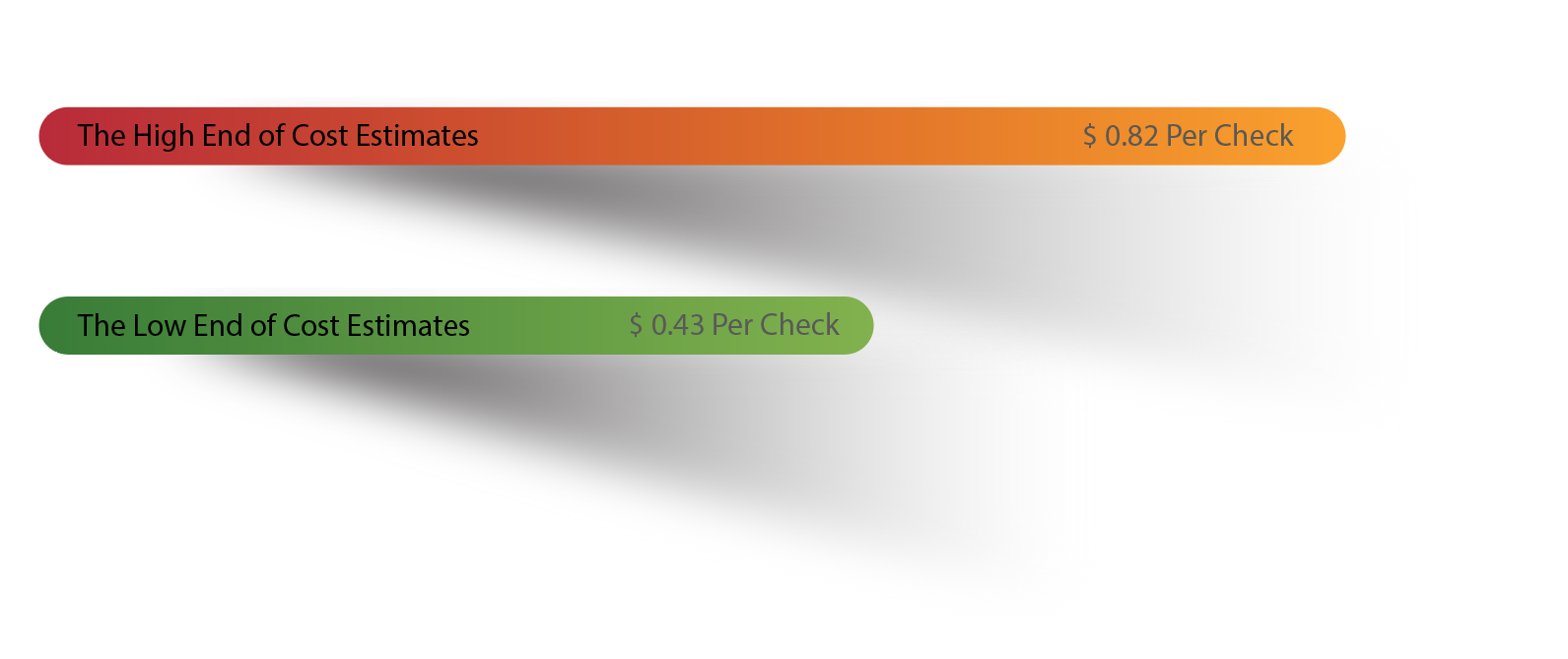
Hidden Costs of Pre-Printed Check Stock
Aside from the hard cost of pre-printed check stock there is the high risk of theft and loss. It is difficult to quantify, but there is significant time and money spent on managing the control of pre-printed check stock before its consumable cost is considered. Then the cost to your business if, when, someone steals a couple of sheets and cashes checks from your accounts.
The Envelope
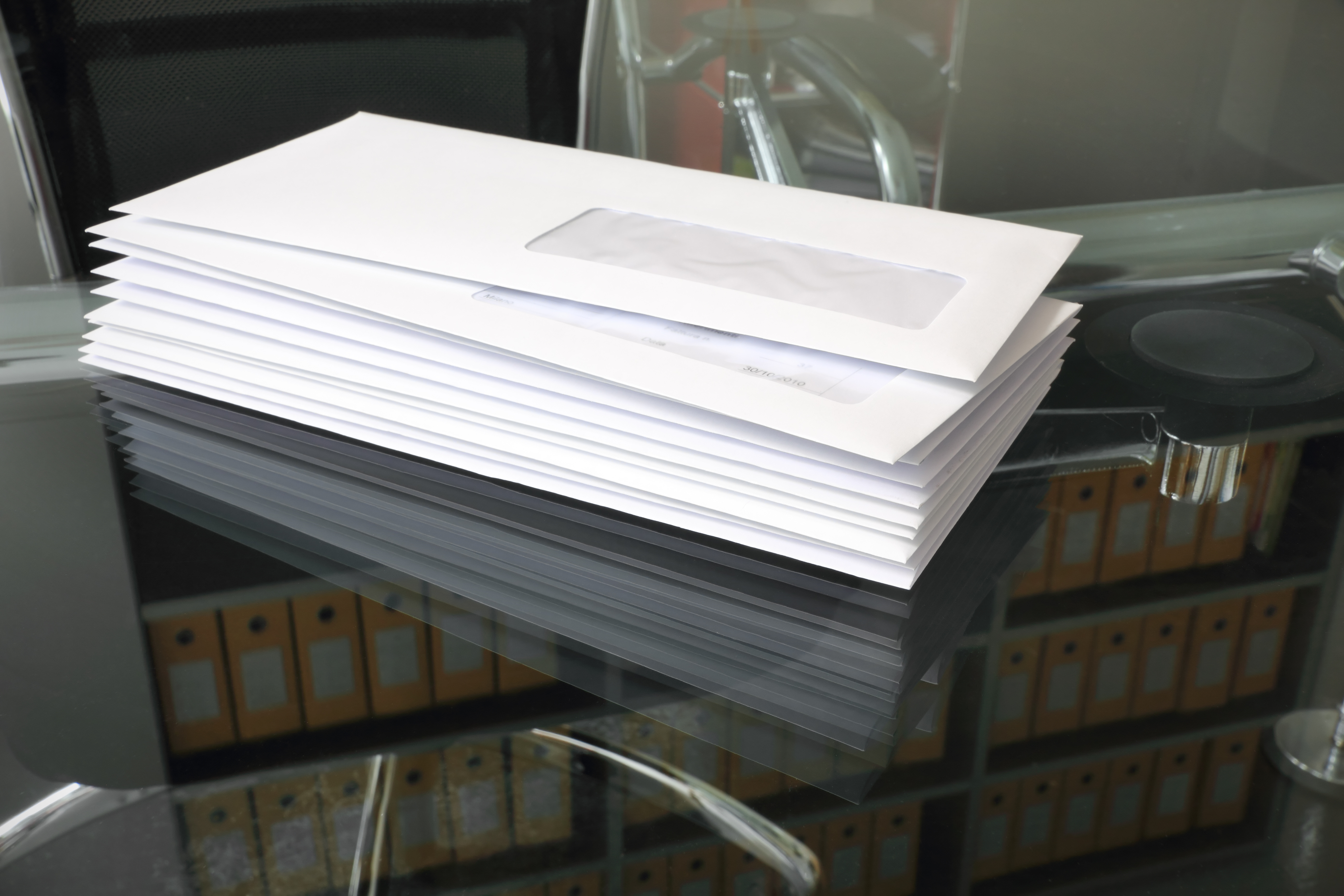
There are a range of options for this, window placement, security features, and self-sealing have impacts on the cost. As with pre-printed check stock, I am assuming 250 envelopes:
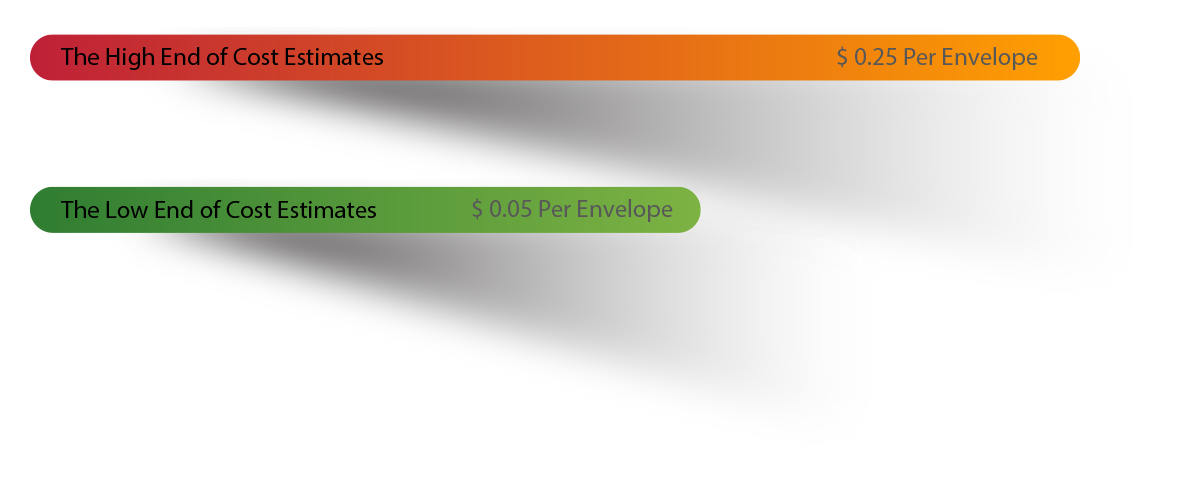
Estimating the price of envelopes can be difficult. Unlike pre-printed check stock, the risk is much lower, so it is a bit easier to buy in bulk bringing down the per unit cost estimates. You can also opt for several sophisticated features from window placement to security. Each choice will have a dramatic impact on the final cost.
The Printer
This is where pricing estimates become more difficult. Buying cheaper MICR printer models might save your business some up-front money, but you run the very real risk of mechanical failures. A printer that isn't working, at best, can't print your critical payments which can cause delays and potentially fees or worse -- needing to replace the printer years sooner than budgeted. This goes without mentioning hidden costs in service plans and poor support from the seller.
The Toner
The MICR toner is what truly matters for check printing. Not only do banks require the use of MICR toner but there are quality specifications required as well, not every MICR toner is the same. Sourcing cheap MICR toner carries risk of low yields or rejection by banks for not meeting the requirements. Both scenarios will cost your business time and money. With that being said:
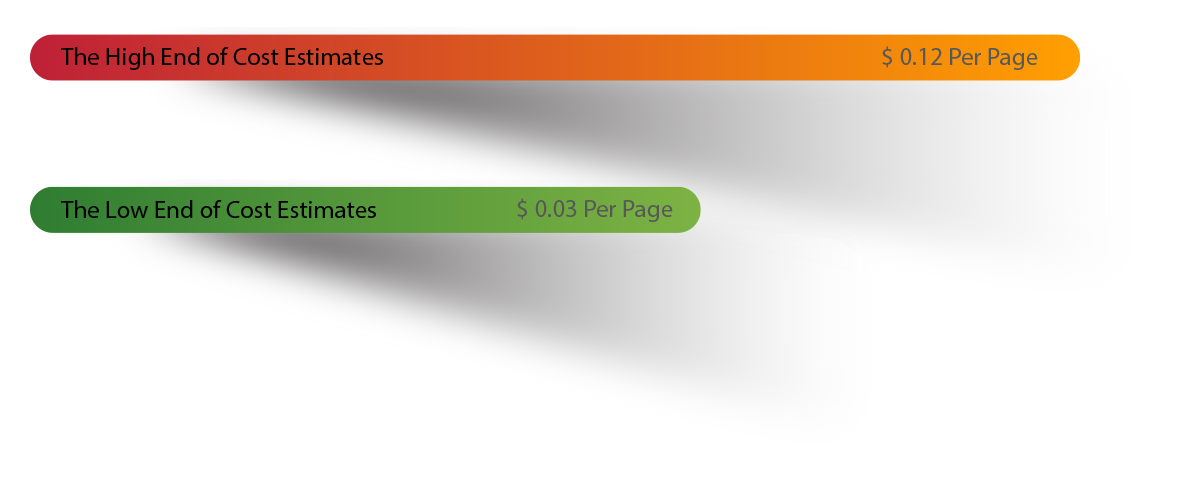
Putting it Altogether!
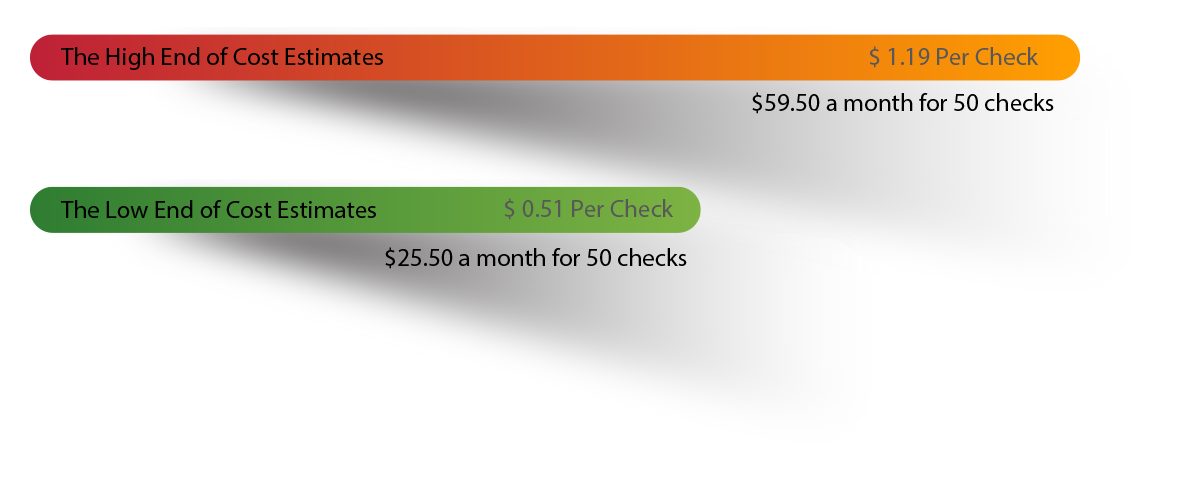
I want to be very clear about these estimates. This is only an absolute minimum cost per check, more to the point, this is a perfect use case scenario. I cannot think of any process or workflow that operates perfect, that isn't a reflection of the real world. This is a starting point. Here is an incomplete list of things that can and do happen that impact the costs of printing a check:
Envelopes get ripped and can't be used.
Printers sometimes jam a print, ruining expensive check stock.
Human error can cause all manner of reprints.
Toner yields are only estimates.
Printers/Machines fail all the time.
Then there are the costs of labor, time lost on replacing parts, delays/fees caused by late delivery of check stock or toner. The list of costs varies for every business, but it does quickly double or triple the cost of each check printed. Once you look at the true costs of check printing for your business you could easily be spending $150 to $200 dollars a month just to print 50 checks on just consumables alone. When you include the cost of labor/time and calculate the cost of mailing you are quickly approaching the industry range of $200 to $1000 cost for 50 checks.
It is important to shed a spotlight on the true costs of check printing. It is easy to assume it's a low cost because it's just a check, a piece of paper. Although, a highly critical piece of paper. Often a business may consider the need to mail checks as just a cost of doing business. Additionally, banks make checks complicated so it's not worth the effort to find a better way.
This is all false.
There are better ways to print checks that comply with banking standards but save your business money. The experts at TROY Group help small and large businesses every day with their check printing, payment processing, and document security. In the next part of this blog series, I will explore the alternatives to printing checks that many businesses already leverage with varying levels of success. You may already be aware of ACH but are you familiar with eChecks or Digital Checks? Do you know the fees associated with these kinds of payment? I will discuss these and more next time!
Related Posts

USPS To Temporarily Increase Prices This Fall
The U.S. Postal Service has announced a temporary price increase on select package services, effective October 5, 2025 through January 18, 2026.

5 Questions to Ask Before Growing Your Branch with Self-Service
If you're a banking executive or president of a small bank or credit union, you're likely researching ways to your organization can expand without breaking the bank on unnecessary..
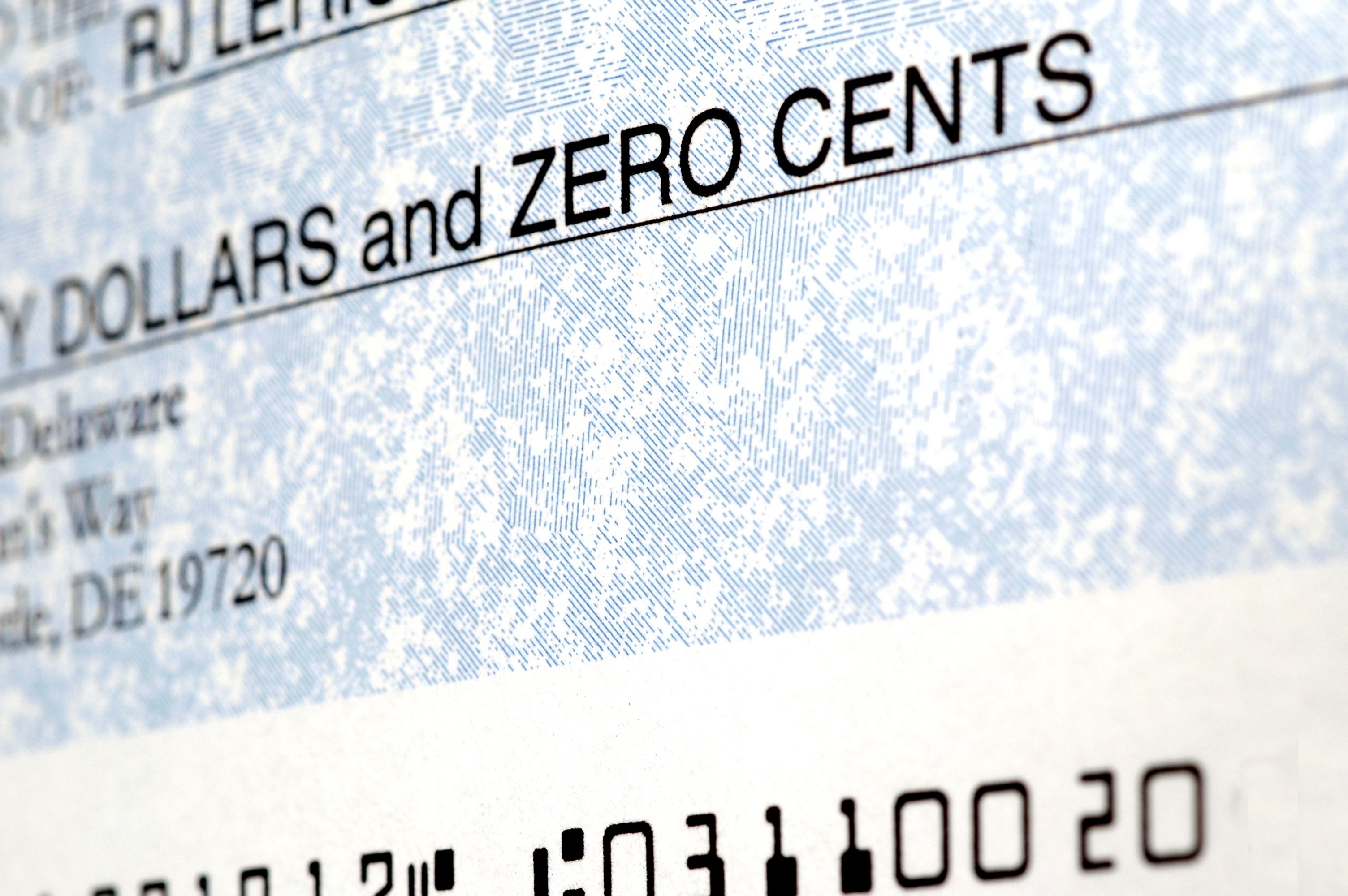


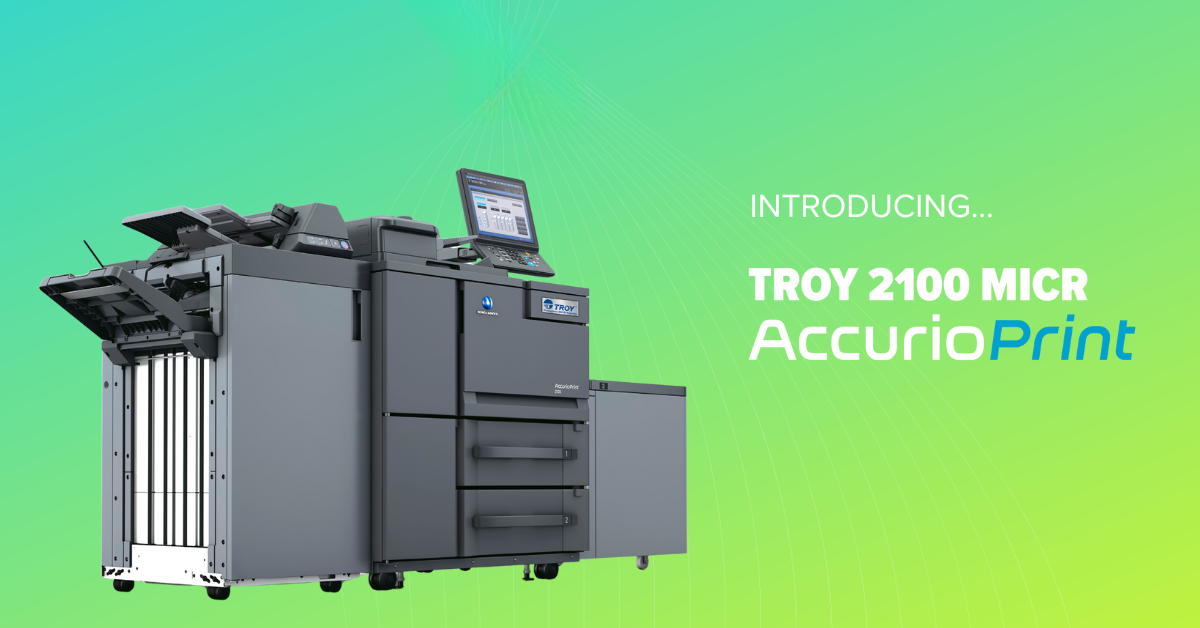
Leave a Reply